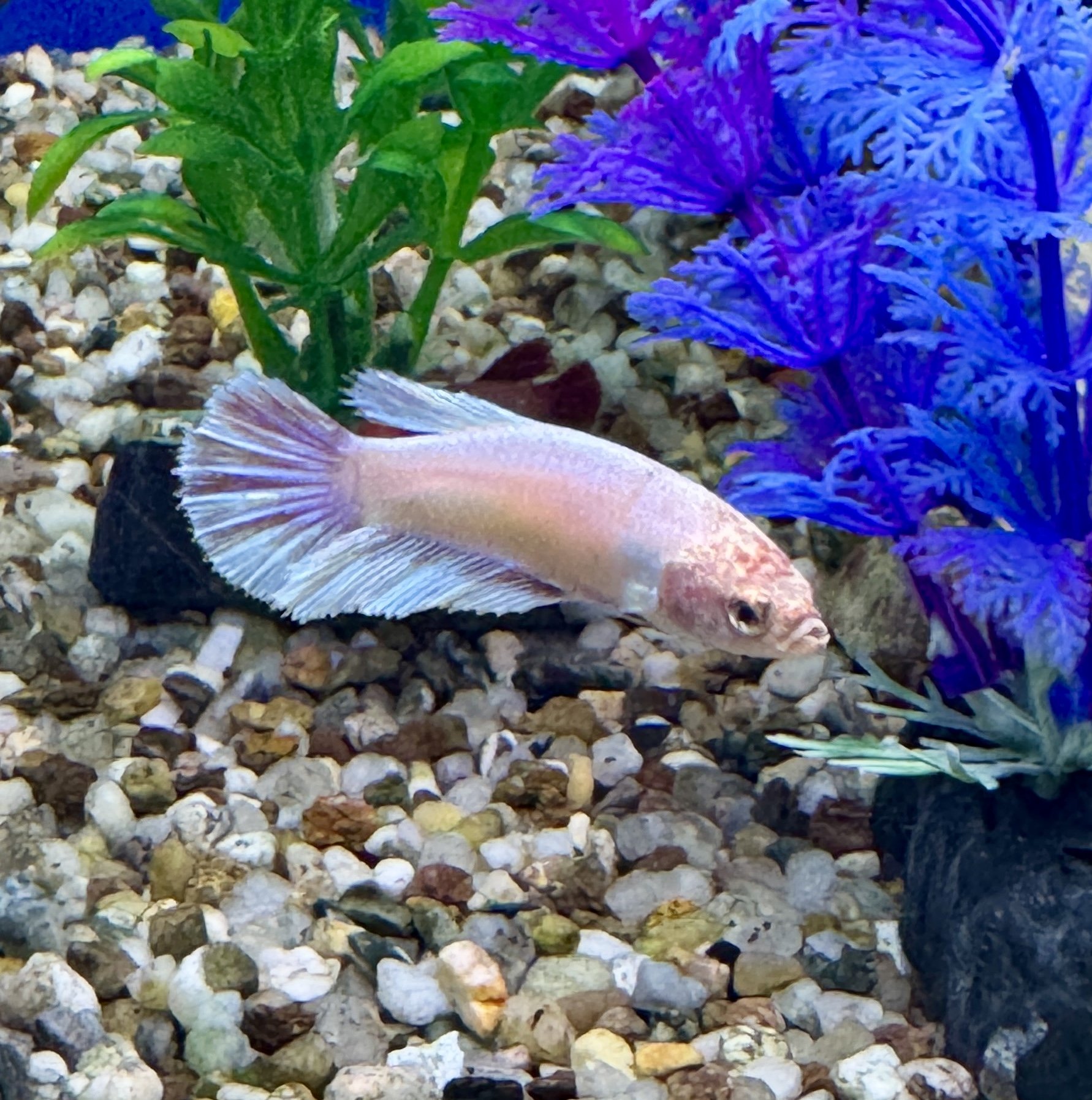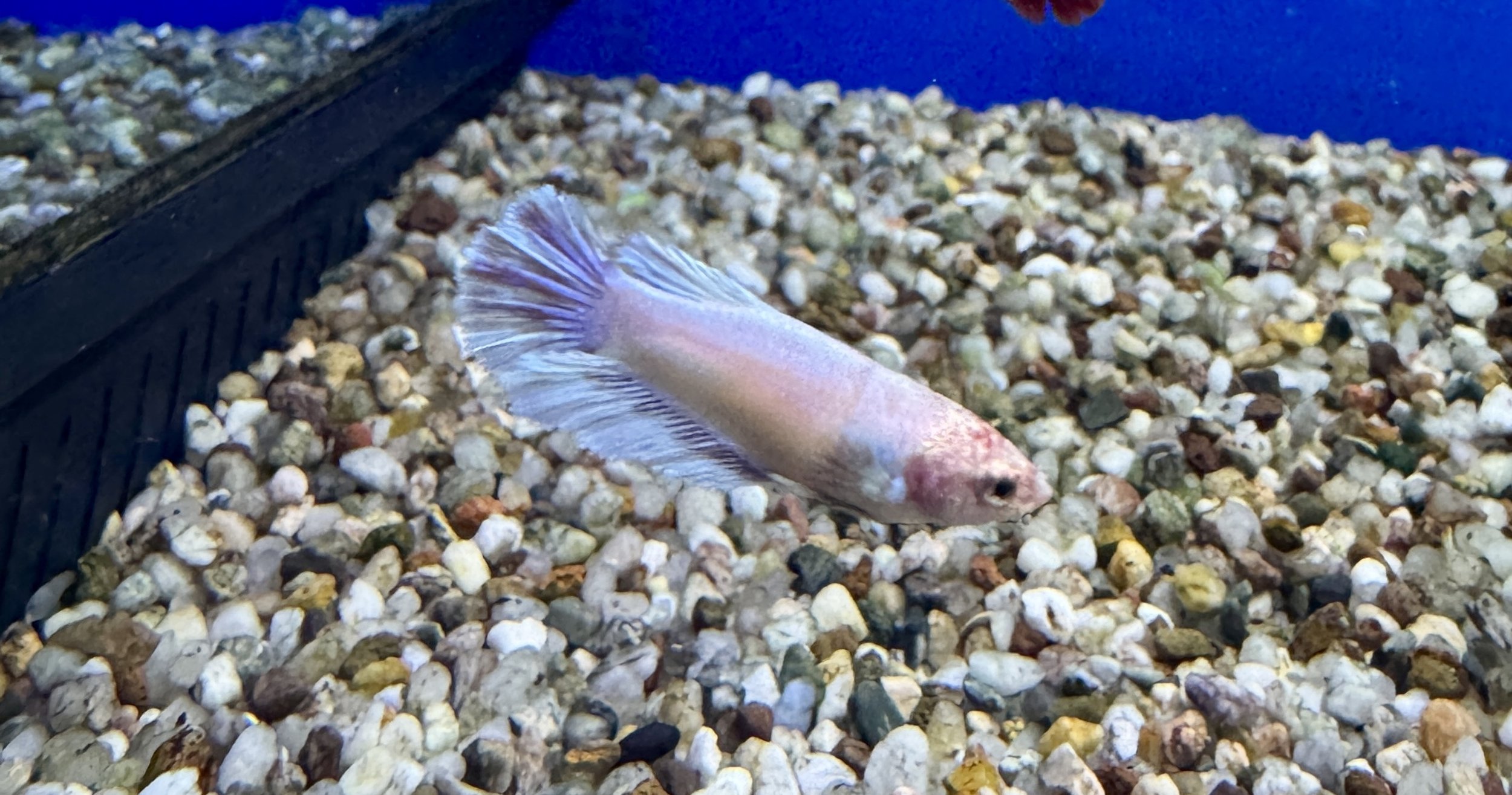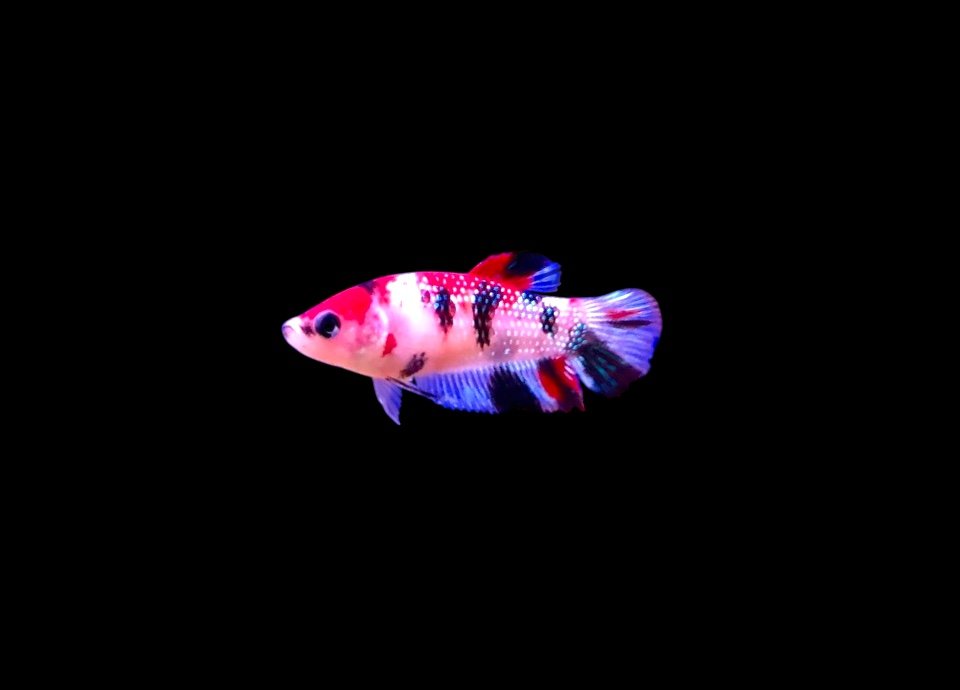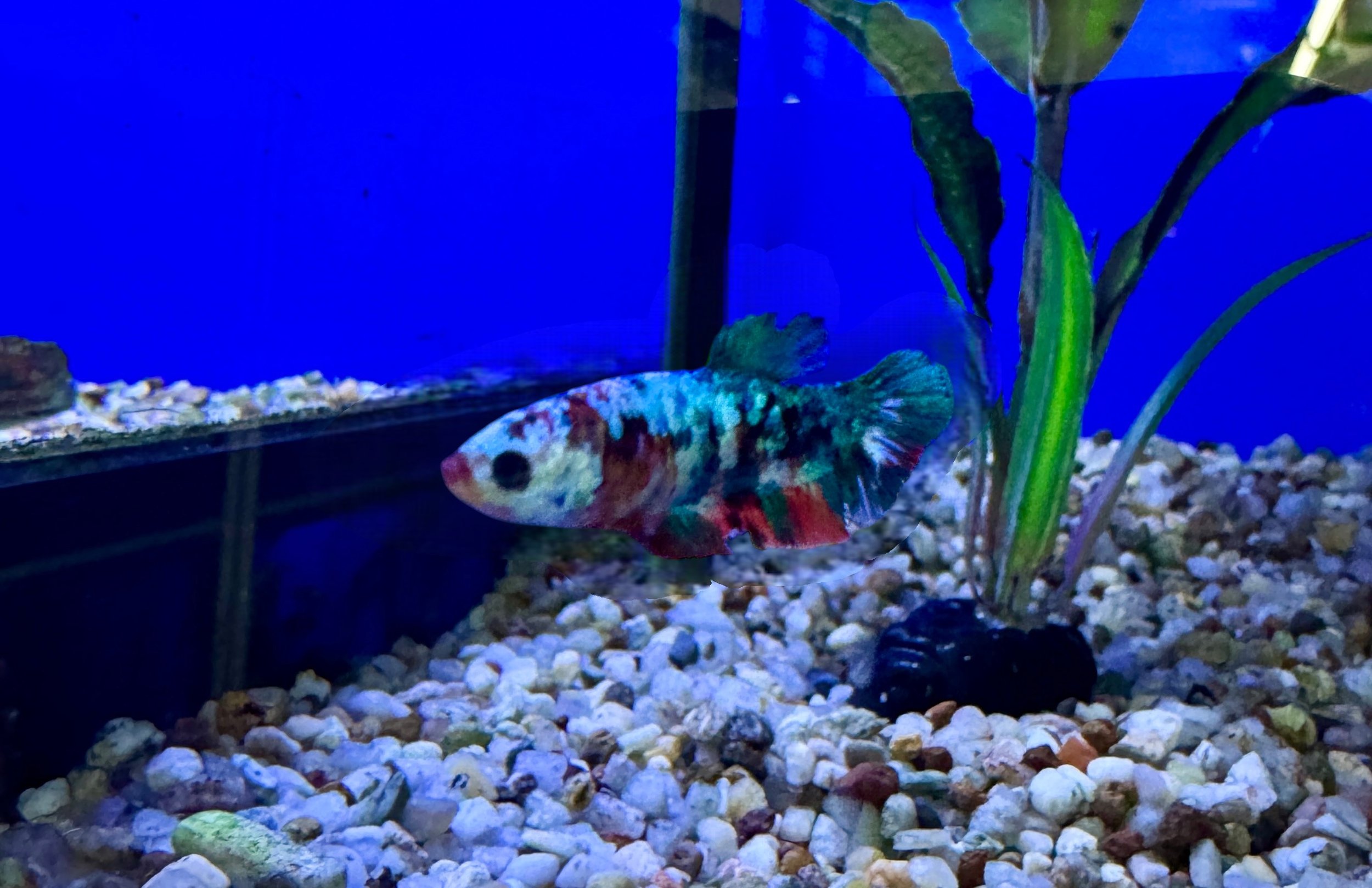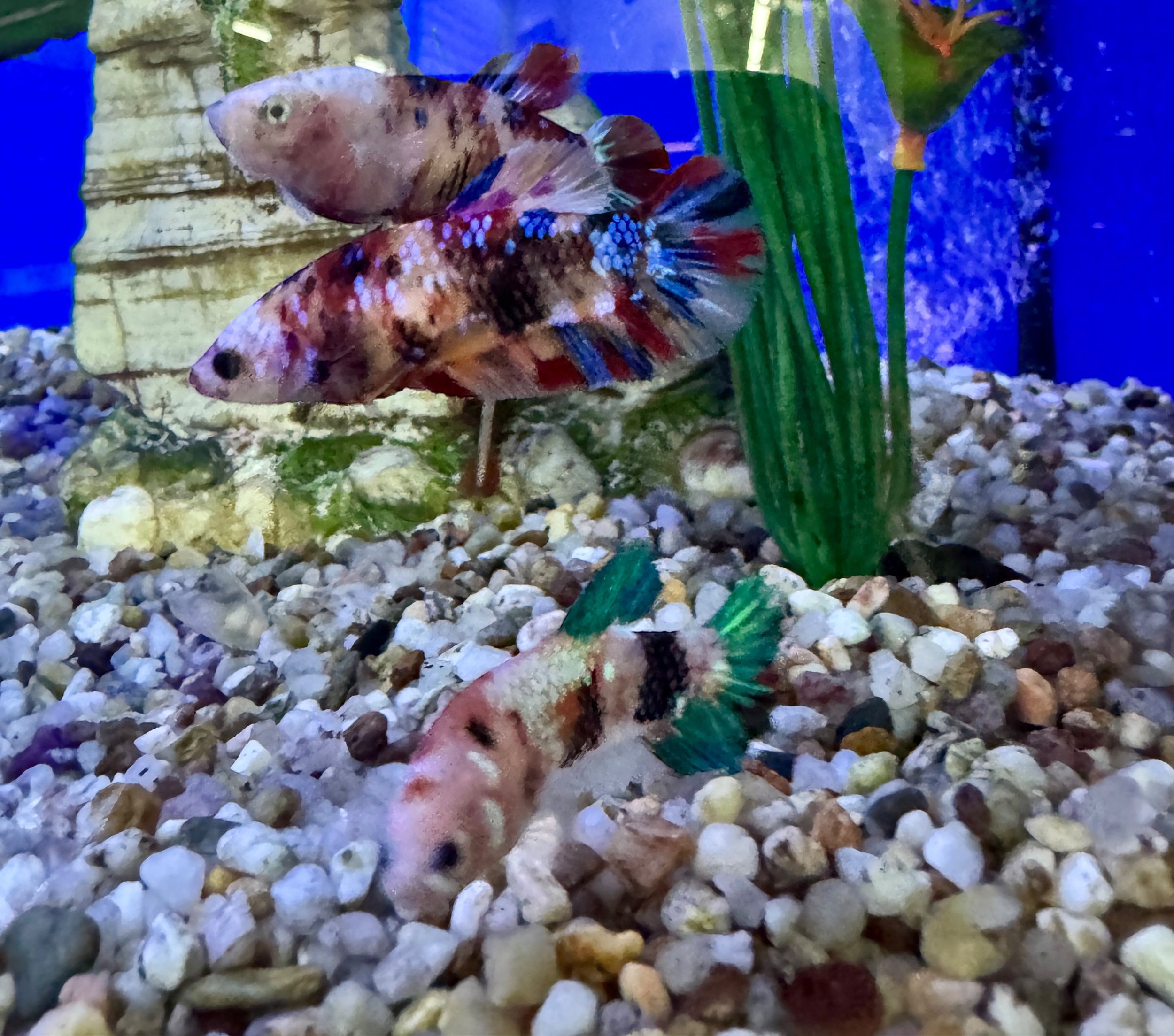The Female Super Delta Betta is a stunning and elegant variety of the popular Betta splendens species. Unlike their male counterparts, female bettas are often less aggressive and can be kept in groups, making them a great choice for community tanks. The Super Delta variety is known for its wide, flowing fins that can span up to 180 degrees, creating a beautiful, fan-like appearance. These fins come in a variety of colors, from vibrant reds and blues to more subtle pastel shades, adding a splash of color and grace to any aquarium.
Female Super Delta Bettas are relatively easy to care for and can adapt to a wide range of water conditions, provided the parameters are stable. They thrive in a well-maintained tank with a gentle filter and plenty of hiding spots, such as live plants, driftwood, and caves. These hiding spots not only provide security but also enhance the aesthetic appeal of the tank. A soft, sandy substrate is ideal, as it mimics their natural habitat and is gentle on their delicate fins.
While generally peaceful, female bettas can still exhibit territorial behavior, especially if they feel threatened or if the tank is too small. It's important to provide enough space and hiding spots to reduce stress and aggression. They do well with other peaceful community fish, such as small tetras such as neons, and small catfish, but should be kept away from aggressive or fin-nipping species.
Feeding Female Super Delta Bettas is straightforward. They are carnivorous and will readily accept a variety of commercial betta pellets, as well as live or frozen foods like brine shrimp, bloodworms, and daphnia. A balanced diet is crucial for maintaining their health and vibrant colors.
Breeding Female Super Delta Bettas can be a bit more challenging than breeding males, but it is possible with the right conditions. The males build bubble nests and court the females, who then lay their eggs. The male will fertilize the eggs and guard the nest until the fry hatch. A separate breeding tank with optimal conditions and minimal predators is recommended to ensure a higher survival rate for the fry.
Overall, the Female Super Delta Betta is a beautiful and low-maintenance addition to any freshwater aquarium, bringing both elegance and a touch of color to your aquatic environment. Their peaceful nature and unique fin shape make them a valuable and enjoyable part of any community tank.
The Female Super Delta Betta is a stunning and elegant variety of the popular Betta splendens species. Unlike their male counterparts, female bettas are often less aggressive and can be kept in groups, making them a great choice for community tanks. The Super Delta variety is known for its wide, flowing fins that can span up to 180 degrees, creating a beautiful, fan-like appearance. These fins come in a variety of colors, from vibrant reds and blues to more subtle pastel shades, adding a splash of color and grace to any aquarium.
Female Super Delta Bettas are relatively easy to care for and can adapt to a wide range of water conditions, provided the parameters are stable. They thrive in a well-maintained tank with a gentle filter and plenty of hiding spots, such as live plants, driftwood, and caves. These hiding spots not only provide security but also enhance the aesthetic appeal of the tank. A soft, sandy substrate is ideal, as it mimics their natural habitat and is gentle on their delicate fins.
While generally peaceful, female bettas can still exhibit territorial behavior, especially if they feel threatened or if the tank is too small. It's important to provide enough space and hiding spots to reduce stress and aggression. They do well with other peaceful community fish, such as small tetras such as neons, and small catfish, but should be kept away from aggressive or fin-nipping species.
Feeding Female Super Delta Bettas is straightforward. They are carnivorous and will readily accept a variety of commercial betta pellets, as well as live or frozen foods like brine shrimp, bloodworms, and daphnia. A balanced diet is crucial for maintaining their health and vibrant colors.
Breeding Female Super Delta Bettas can be a bit more challenging than breeding males, but it is possible with the right conditions. The males build bubble nests and court the females, who then lay their eggs. The male will fertilize the eggs and guard the nest until the fry hatch. A separate breeding tank with optimal conditions and minimal predators is recommended to ensure a higher survival rate for the fry.
Overall, the Female Super Delta Betta is a beautiful and low-maintenance addition to any freshwater aquarium, bringing both elegance and a touch of color to your aquatic environment. Their peaceful nature and unique fin shape make them a valuable and enjoyable part of any community tank.

